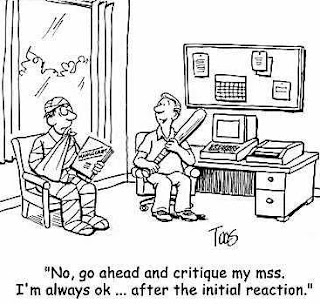If you’ve trawled the
bestseller charts in the past twenty years, chances are you’ve read a book my
editor was behind. He’s worked with thriller veterans Len Deighton and Gerald
Seymour; launched new writers like Conn Iggulden and Philipa Gregory; and most
recently guided David Nicholls to a mega-hit with One Day. I was also delighted to discover he used to be Flashman’s
editor! His name is Nick Sayers and as another publisher once told me, ‘he’s
the best in the business’.
 |
| Nick & I at Clays where TAR was printed |
1) Nick wanted the structure of the book tweaked, so that
the reader would get to the alternative history sections more quickly. There
are two extended passages of them (one explaining Britain
2) He also suggested that further context be added:
details about Nazi Africa. I had already included plenty, but Nick insisted on
more, everything from agricultural policies in Kongo to the ethnic mix of the
conquerors. This had an implication on the text which I’ll come back to in ‘F
is for...’
3) The use of the word ‘nigger’. I realised this was a contentious
and sensitive subject so had employed it sparingly despite the virulent racism
of the characters; originally it appeared 42 times (in a 120 000 word book)
Nick felt this was too much, so I trimmed it to 26. Any more and the Nazis
would start sounding a bit too PC, something one could never accuse Hochburg
of!
4) Finally, and perhaps this was the point Nick was most
adamant about, he wanted Burton Burton the
more morally buoyant character who appears in the novel (though hopefully as
I’ve shown there remains a certain ambiguity to his character). In retrospect this
is the one change I have some regret over. My original plan for the trilogy was
to have Burton begin as
amoral and gradually change till the final showdown at the end of Book 3. By
then, and influenced by his experiences, he would be attached to a more
Manichean code.
Once implemented, the above
changes amounted to less than 2% of the book. I think they were the right ones
for the time (remember I was struggling to get my first publishing deal!) and
in retrospect I don’t think they harmed the book, they simply made it different
from my original. Whether readers would have reacted differently to that vision
is something I’ll never know...
E is also for EL REICH AFRICANO
Once the book had been
commissioned in the UK
The first to buy it was Spain

